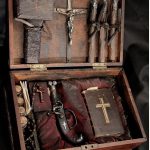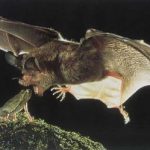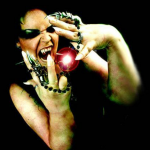In Balkan folklore, a dhampir (also spelled dhampyre, dhamphir, or dhampyr) is the child of a vampire father and a human mother.
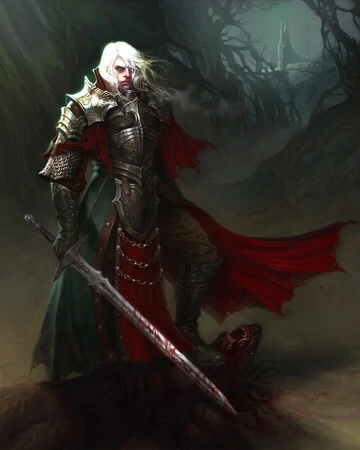
The word dhampir is believed to derive directly from Albanian: pij or pirё which means “to drink”, and dhёmbё or dham which means “teeth”, thus dhampir, “to drink with teeth”.
In the rest of the region, terms such as Serbian vampirovic, vampijerovic, vampiric (thus, Bosnian lampijerovic, etc.) literally meaning “vampire’s son”, are used. In Bulgarian folklore, numerous terms such as glog (lit. “hawthorn”), vampirdzhiya (“vampire” + nomen agentis suffix), vampirar (“vampire” + nomen agentis suffix), dzhadadzhiya and svetocher are used to refer to vampire children and descendants, as well as to other specialized vampire hunters.
In the Balkans it was believed that male vampires have a great desire for women, so a vampire will return to have intercourse with his wife or with a woman he was attracted to in life. Indeed, in one recorded case, a Serbian widow tried to blame her pregnancy on her late husband, who had supposedly become a vampire, and there were cases of Serbian men pretending to be vampires in order to reach the women they desired. In Bulgarian folklore, vampires were sometimes said to deflower virgins as well. The sexual activity of the vampire seems to be a peculiarity of South Slavic vampire belief as opposed to thazt of other Slavs, although a similar motif also occurs in Belarusian legends.
Dhampirs are mortals and enjoy similar powers to those of vampires, but without the usual weaknesses, meaning that unlike their parents, dhampirs are capable of walking around in the day. Dhampirs are supposed to be adept at detecting and killing vampires.
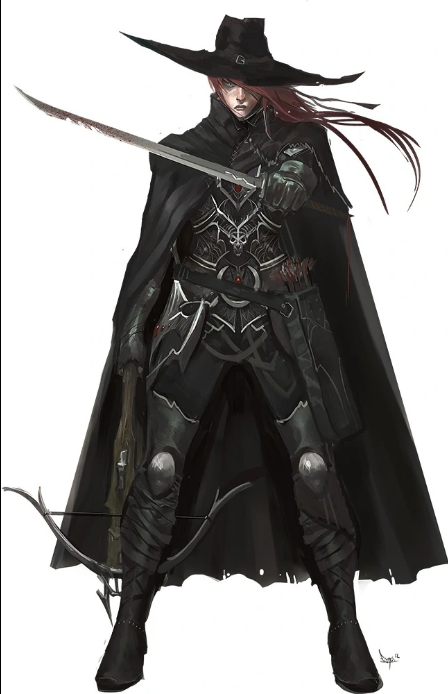
In some parts of Serbia, the population believes that a vampire is invisible and that only a dhampir can find him. Arriving in the contaminated village, the Dhampir would perform bizarre rituals, whistle strange tunes, ran in circles like a madman, stripped himself, and used his sleeves as some kind of telescope. Then he makes a spectacular sighting of his wrestle with the invisible. When everyone was sufficiently impressed, he explained with dramatic tone that the feared Vampire was destroyed.
Some traditions specify signs by which the children of a vampire can be recognized. Serbian legends state they have untamed dark or black hair and lack a shadow. In Bulgarian folklore, possible indications include being “very dirty,” having a soft body, no nails and bones (the latter physical peculiarity is also ascribed to the vampire itself), and “a deep mark on the back, like a tail.” In contrast, a pronounced nose was often a sign, as were larger than normal ears, teeth or eyes.
According to J. Gordon Melton, from his book, The Vampire Book: The Encyclopedia of the Undead, in some areas, a true dhampir possessed a “slippery, jelly-like body and lived only a short life—a belief that vampires have no bones.”



